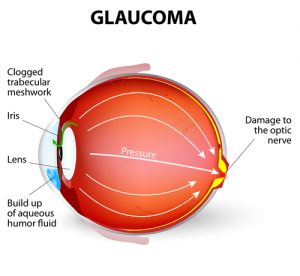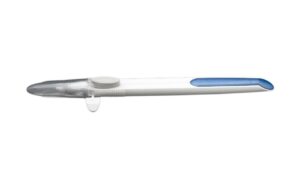Do you or someone you love have glaucoma? Glaucoma is a prevalent eye condition in older adults, especially those who are at least 60 years old.
It’s also one of the leading causes of blindness in that age group. While there’s no cure for glaucoma, there are a variety of treatments that help make it easier to manage the eye condition by preventing or slowing down vision loss.
These treatments include a variety of medications and surgical procedures. One revolutionary new glaucoma treatment available at See Clearly Vision is called Durysta. Using Durysta can help reduce the need for daily eye drops used to treat glaucoma.
Keep reading to learn more about glaucoma and if Durysta could be a treatment option worth considering!
What is Glaucoma?

Glaucoma is the name given to a series of eye conditions that cause damage to the optic nerve. The optic nerve is the part of your eye that connects to your brain.
When damaged, the nerve has trouble sending all the information about what you see to your brain. Glaucoma patients with significantly damaged optic nerves begin to lose their peripheral vision.
The more damaged the optic nerve becomes, the more your vision begins to tunnel. There are several kinds of glaucoma. Almost all types of glaucoma develop as a result of increased eye pressure.
When fluid builds up in the eye, it can strain the optic nerve. If the optic nerve undergoes strain, it suffers damage as pressure rises.
Open-Angle Glaucoma
The most common form of glaucoma is open-angle glaucoma. This form of glaucoma occurs when the primary drainage angle of your eye, which exists between the cornea and iris, is open.

Although the primary drainage angle of the eye stays open, the porous tissue surrounding your eye, called the trabecular meshwork, remains blocked off. When the trabecular meshwork isn’t open, it causes eye pressure to build up slowly over time, eventually damaging the optic nerve.
One of the hardest things about glaucoma, especially open-angle glaucoma, is that the damage done to the optic nerve is irreversible. Once you experience vision loss from glaucoma, it’s permanently gone and cannot return.
There are also very few symptoms that occur with glaucoma before vision loss. One of the more common names for glaucoma is the silent thief of sight.
Many patients don’t realize they have the eye condition until they’ve already experienced irreversible vision loss. But there is a way to prevent vision loss from glaucoma by scheduling regular eye exams.
If you have your eyes examined regularly, it becomes much easier to find any signs of glaucoma early on. You can begin treatment and prevent vision loss if it hasn’t already started.
What is Durysta?

If you have open-angle glaucoma, many eye doctors begin treating the condition by using eye drops that lower eye pressure. You need to take these eye drops every day, often indefinitely, to prevent further damage to the optic nerve.
A new treatment called Durysta helps replace the need for daily eye drops, making it easier to live with glaucoma. Durysta is a medical implant placed directly in the eye.
It’s designed to slowly dispense a certain kind of medication called bimatoprost in your eye. This medication lowers your eye pressure and puts less strain on the optic nerve.
With Durysta, patients can enjoy several months (about 15 weeks) of eye pressure control. The medication gets automatically released while dissolving and keeps your eye pressure level.
Who Can Get Durysta?

Durysta is only for patients with open-angle glaucoma or high ocular pressure. Having high eye pressure increases their risk of developing glaucoma.
These patients can reduce their risk of developing glaucoma by lowering their eye pressure. Patients with glaucoma can slow down further damage to their vision by keeping their intraocular pressure stable.
How Does Durysta Work?
Durysta is a tiny implant that will dissolve in the eye automatically. After Durysta implanted in the eye, there’s no need to have it removed later.
It’s implanted in the eye in a doctor’s office without needing surgery. When implanted, it releases a steady amount of a medication called bimatoprost.
This dosage of bimatoprost lowers eye pressure, and its controlled release ensures that intraocular pressure stays low. After having Durysta implanted, you won’t be able to feel it in your eye or see it.
Risks and Possible Side Effects of Durysta

Durysta is a safe, FDA-approved prescription medication and drug delivery system for reducing intraocular pressure. As with any medication, there is some degree of risk.
The main side effect of Durysta that patients may experience is eye redness. To minimize the risk of more concerning side effects and complications, talk to your eye doctor at See Clearly Vision to ensure Durysta is the right glaucoma treatment for you.
Keep in mind that glaucoma often requires multiple forms of treatment. Durysta alone may not be enough to manage moderate to severe open-angle glaucoma.
But Durysta is an excellent alternative to taking daily eye drops to lower your eye pressure. Even if you require multiple forms of glaucoma treatment, such as surgery, Durysta may still be an effective part of a more intensive treatment plan.
You may not be a good candidate for Durysta if:

- You have an infection or suspect you may have an infection in your eye or the area surrounding your eye
- You’ve previously had a corneal transplant or an endothelial cell transplant
- Your posterior lens capsule is missing or torn
- You have an allergy to any of the ingredients found in Durysta
The FDA has only approved the use of Durysta in each eye once. Once the implant has dissolved, you may not have a new one implanted in the same eye.
If you have high eye pressure or open-angle glaucoma, Durysta may be a glaucoma treatment worth considering! Schedule an appointment at See Clearly Vision in Tysons Corner or Arlington, VA, to find out more!



















